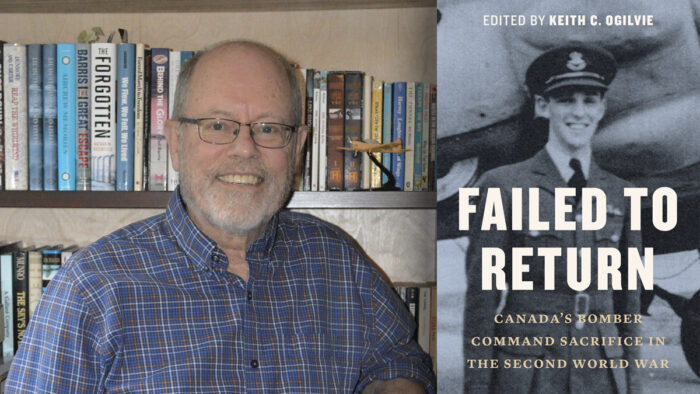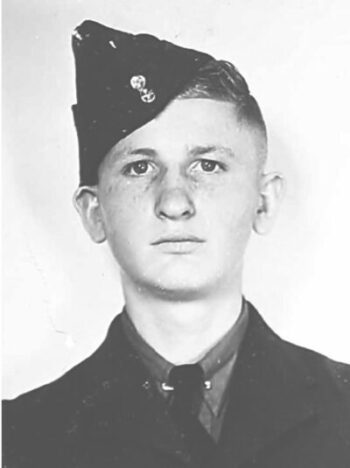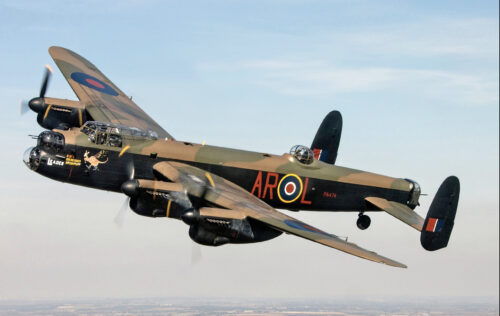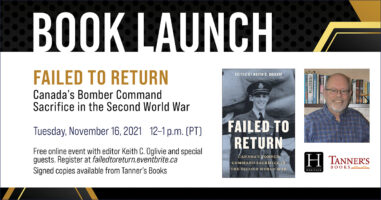
Failed to Return: Canada’s Bomber Command Sacrifice in the Second World War is a collection of essays about Canadians in the Royal Air Force Bomber Command during WWII. In Failed to Return, author Keith C. Ogilvie tells stories of heroism and tragedy from Canada’s Bomber Command while offering insight into the lives of some of the men who were killed and missing in the line of duty.
Kingsville Times spoke with the author about Failed to Return to learn more about the enduring fascination of World War II and his interest in sharing war stories with his readers.
Kingsville Times:
Given that World War II ended over 75 years ago, what is it about this war that continues to fascinate researchers, writers and readers alike?
Keith C. Ogilvie:
WWII was the most destructive war in human history, with more than 50 million people killed over its course. In one sense it is a morbid fascination that people have for associated events because of the sheer human scale of the loss, but on the other hand it is interest in an almost unending collection of individual stories.
There is almost no one still alive who participated in actual combat, particularly the air war, and the generation who knew those involved and heard their stories first-hand is rapidly disappearing. The primary sources of these stories are gradually being lost. Confronted with the awful statistics, people interested in modern history are still trying to understand the motivations, experiences, and fates of the people who were directly engaged.
KT:
Your book focuses on the Canadian airmen of WWII. With over a million Canadian men and women serving in the armed forces, why did Canada’s Bomber Command capture your interest?
KCO:
I served in the air force myself, was a private pilot and have had a lifelong fascination with aircraft. My father flew a Spitfire in the Battle of Britain and I have until now had a primary focus on fighter pilots and machines of the air war. In doing related research, however, one can’t help but learn about the terrible casualty rates among those who served in Bomber Command.
It was a different air war, and took a different kind of training and particular courage for these young men — most between the ages of 18 and 25 — to get into a freezing aluminum aircraft, fly so high they relied on oxygen for their survival, go through often filthy weather into enemy territory to confront night fighters, heavy antiaircraft fire and see their friends regularly shot out of the air around them. And most of all, to do this night after night.
Again, the statistics were frightening—of some 40,000 Canadian airmen who served with Bomber Command, around 10,000 didn’t survive. I felt strongly their individual and collective stories need to be told.
KT:
Canadian War Museum data indicates that more than 17,000 Canadian airmen perished during the war. Your book looks at 16 stories of Canadians who were killed in the line of duty or declared missing while serving in Canada’s Royal Air Force Bomber Command. How did these stories stand out from others?
KCO:
Some of these stories had been published previously, in the UK and cover crews whose members came from all over the Commonwealth, but the scale of the Canadian contribution stood out. So did the fact that all the Canadians and almost all of the other Commonwealth airmen were trained through a program based in Canada, the Commonwealth Air Training Plan, that contributed hugely to the success of the air war.
It was also a key part of Canada maturing as an independent nation. I have added my own story of a Canadian from Victoria, where I live, whose adventures and luck — good and bad — stood out for me as a particularly poignant example of the cost of war.
The Canadians who are remembered in the book are men from across Canada, from all kinds of backgrounds and abilities, and who truly represented those who were lost.

KT:
Kingsville’s Sergeant Jacob Schafer is profiled in the book. What can you tell us about his mission?
Sergeant Schafer is mentioned in Chapter 14. The flight 27 August 1944, crashed near small Danish village of Åstruplund. He was buried in the churchyard at the town of Gammell Rye on 30 August.
KCO:
Sgt. Schafer was typical of the young men who flew with Bomber Command. Around 1940, his parents, Mr. and Mrs. Jacob Schafer, had moved from Windsor to a rural route address just outside of Kingsville. At age 18 and as the Allied bombing campaign was reaching its peak, he joined the RCAF. Trained in Canada as an air gunner, he shipped out to the UK in December of 1943.
Jacob’s last mission should have been a low risk one, laying mines in the Bay of Danzig (now Gdansk, Poland). The mission was apparently completed successfully, but on the return flight the aircraft encountered severe electrical storms and icing conditions. Instead of returning to the home base in Lincolnshire, the crew was redirected to the Royal Air Force base at Lossiemouth, in Scotland.
Despite reports of only light opposition, as they flew back over Danish territory, Sgt. Schafer’s Lancaster was intercepted by an enemy night fighter and shot down in flames into a farmer’s field near Åstruplund, Denmark. The entire crew, including Jacob, were lost. Their remains were eventually buried in Gammell Rye. Sgt. Schafer was 19 years old.

KT:
With so many books detailing the heroic efforts of Canadians in WWII, what is one fact readers might learn from your book that they may not have come across in other books?
KCO:
The significant contribution, to Canada’s evolving nationhood that came directly from Canada’s contribution to the air war, and the fact that this came at inconceivable cost to so many young men. Their final experiences are impossible to imagine, but they all knew the risks and presented themselves anyway.
There are an increasing number of books about individual wartime experiences, but these are the men who Failed to Return. They are all, without exception, ordinary men who were heroes for having done what they did.
A free virtual book launch will be held November 16, 2021 at 12 p.m., Pacific Time. Register online at Eventbrite.

To read more about Canada’s role in the Second World War:
Visit the Canadian War Museum online resources here.
Failed to Return: Canada’s Bomber Command Sacrifice in the Second World War is available for purchase at:
River Bookshop, Amherstburg
Biblioasis, Windsor
Online at Chapters/Indigo
All photos supplied by Monica Miller, Heritage House unless otherwise noted.

Hello Keith,
I work at the Kingsville Military Museum and I would like to inform you that there is an extensive data bank of soldiers from WWI and WWII. You are welcome to come to do any research there and compare what we have. Please call 519-733-2803.
The museum is open Tuesday to Friday 9am to 1pm. and Saturday 9am to 12pm.
Located at 145 Division St S Kingsville (at the back of the Legion parking lot)